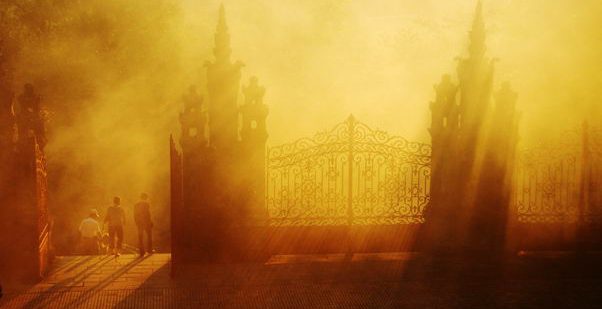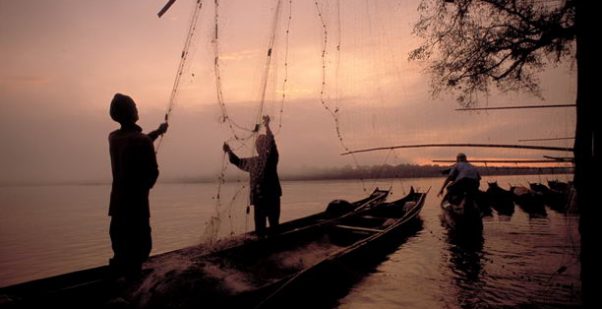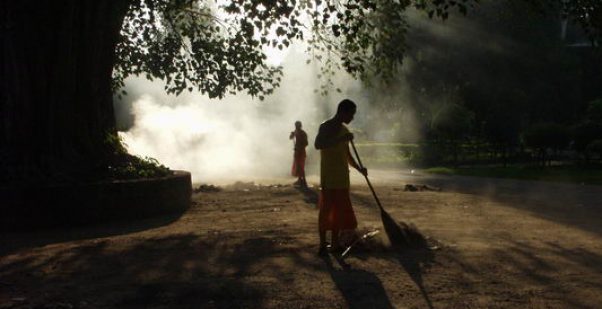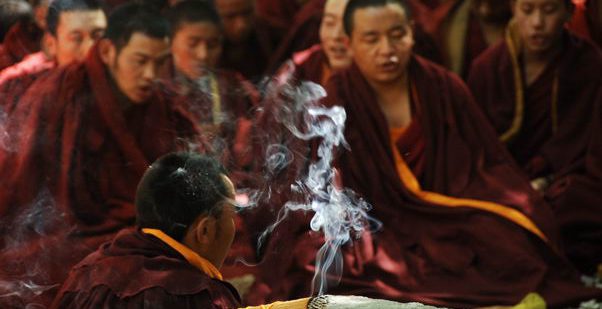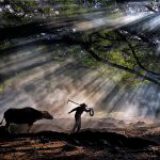Technology changes with time, but the fundamentals and recipes in photography remains. This article was first published in 2007, revised in 2018
“What is this world? A mere curl of smoke for the wind to scatter.”Abraham Cahan.
I get excited when I see smoke, dust or mist appearing in front of me. To me, these are good photography opportunities. Some of the famous pictures have some element of smoke, dust or mist. I am sure there are fleeting memories of images of the soldiers and tanks charging in the midst of Desert Storm. I once asked myself, do these opportunities come ONLY out of luck, or can we create or anticipate them?
It is good to know what created smoke or mist. According to Wikipedia, smoke is the collection of airborne gas and particulates, often a by product of fire. Mist is a phenomena of tiny droplets suspended in the air, usually due to cold air above warmer surfaces. Fog and mist are similar, difference only in visibility. Anyway, we are not here to talk about the scientific terms or names, but how to take better pictures of the smoke and mist as well as how to anticipate or even create them.
One need not be an expert in photography to be able to take pictures of smoke and mist. One needs to equip oneself with the necessary basic photography knowledge as well as with the right equipment. For many beginners, some of the common problems faced will include:
- Camera or subject shake
- Messy background
- Unsure of which angle to adopt
Low lighting condition and use of low ISO, which results in slower shutter speed, are the main culprit for camera and subject shake. If the subject is stationary, a good tripod will be useful in preventing camera shake. If you are shooting handheld, it is good to achieve a shutter speed of at least 1 / (focal length). If the subject is moving, you may like to use a higher ISO.
Many beginners often overlook the distracting objects in the foreground and background which can draw the viewers’ attention away. The good thing about smoke and mist is they can help to hide these distracting objects.
Another common problem faced by photographers is the lack of ideas as to what angle to use. For smoke and mist, the tip is to identify what is good to be the main subject when you see smoke and mist. From there, you can conceptualise the composition and it will be easier to get the angle. It is good to spend some time exploring the various angles. Experiment with the various angles and shoot more, shoot both horizontally and vertically. If the results are unsatisfactory, you can always delete the images later.
Equally important is the ability to appreciate the quality of light at different times of the day as well as the weather condition. Mid day sun is usually avoided to prevent having hotspot on the subjects. Early morning and late afternoon often produce good lighting that light up the subjects nicely. Even on a cloudy day, the flat lighting can also help to produce some modest images. Hence, do not discount the possibility of photographing nice images even on a cloudy day.
Some Tips:
- It is important to identify what can be your main subject when you see smoke or mist.
- Make sure the smoke or mist does not cover your main subject, so called “smoked out”.
- Use of lighting to create visual impact, especially lighting in early morning or late afternoon.
- If need be, increase the ISO to minimize camera shake.
With the tips above in mind as well as the case studies below, enjoy your quest in seeking the smoke and mist.
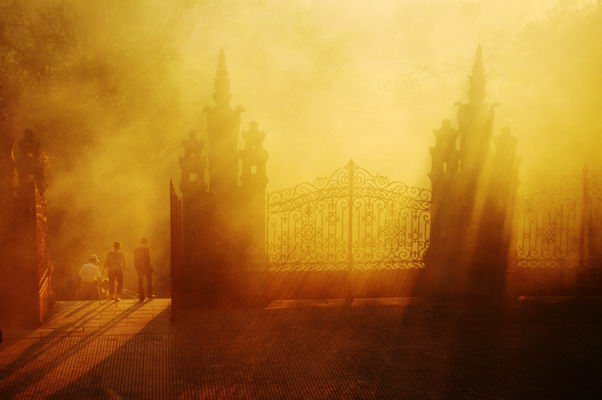
Center Weighted metering, Daylight White Balance, ISO200, Aperture Priority Mode, Shutter speed 1/1000s, Aperture f4.2, 18-200mm
It was sunset, not cloudy and the light was golden. The group of us were taking a rest after climbing more than 100 steps with our gear. Some locals were burning some garbage nearby and the smoke soon filled the air. Yup, presto, smoke and strong light are just the perfect combination that we were waiting for. The ray of lights was pretty obvious. Waited for a while for some people to get into the picture and we fired away.
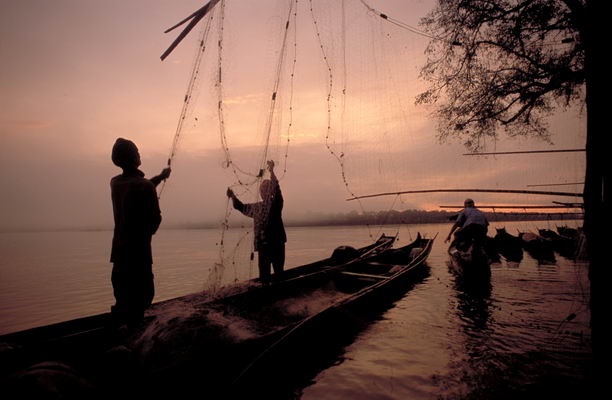
Center Weighted metering, Daylight White Balance, ISO400, Aperture Priority Mode, Shutter speed 1/250s, Aperture f4, 12-24mm
Early morning, the mist filled the horizon. The air was cold. The mist added mood to the picture, blanketing whatever distracting objects we hope to omit in the background. There was this tower that we found distracting, hidden behind the mist. The mist created a very good background for this picture. The other half of the background revealed some trees and land. Overall, I am happy that it turned out this way.
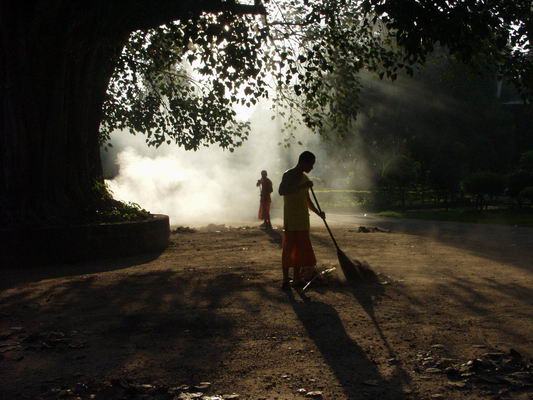
Center Weighted metering, Daylight White Balance, ISO200, Program Mode, Shutter speed 1/1000s, Aperture f10, 18-200mm
The light is strong. The path is dusty. These factors are once again the perfect combination for a smoky picture. I asked my local photography guide to borrow a broom and swept the pathway. I saw how my local photography guide swept up the pathway to “smoke out” the place and soon, the dust soon filled the air, a la Desert Storm. He was once a monk, and he is used to doing such chores during his monastic life. The “smoke out” background helped to serve as a screen to hide the trees and other distracting objects in the background.
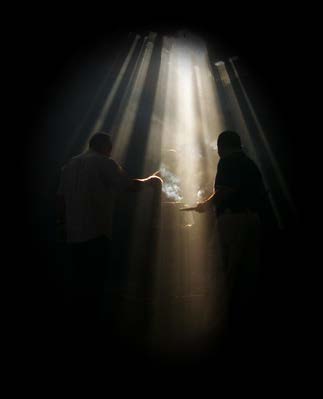
Center Weighted metering, Daylight White Balance, ISO800, Aperture Priority Mode, Shutter speed 1/250s, Aperture f3.8, 18-200mm
These rays of light may look difficult to spot or create. What it takes to create this effect is to have concentrated light from a point source, in this case, an opening in the roof, as well as burning of joss sticks or dried leaves to create the smoke. Smoke is needed to reveal the rays of light.
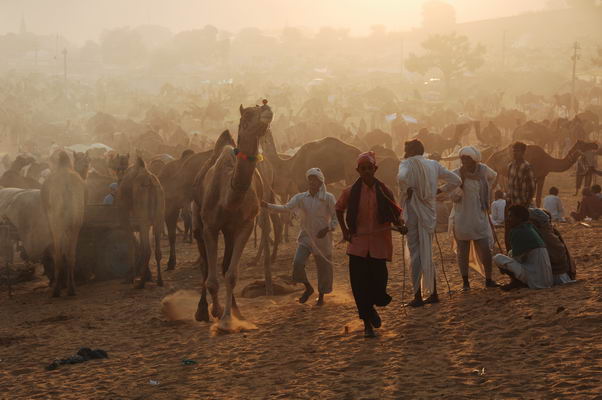
Matrix metering, Daylight White Balance, ISO320, Program Mode, Shutter speed 1/320s, Aperture f8.5, 18-200mm
Shot in Pushkar, India, very early in the morning. From the picture, one can already imagine how dusty the place is and coupled with the fog in the early morning, this place looked more like a dreamland. I took particular attention to the camel and the people when they kicked the dust as they walked.
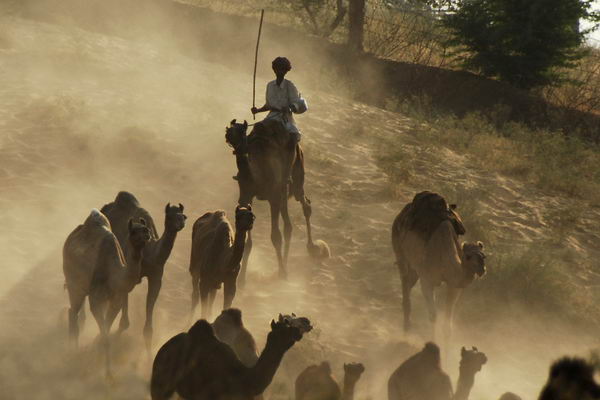
Center Weighted metering, Daylight White Balance, ISO200, Aperture Priority Mode, Shutter speed 1/1000s, Aperture f5.6, 18-200mm
The shepherd chased the herd of camels down the sandy slope and the place was “smoked out” by the dust. It was early morning and the early morning light helped to make the picture look subtle. If this was shot in the noontime, the results will be a harsh lighting image with washed out details. This is the reason why photographers wake up so early in the morning to take pictures.
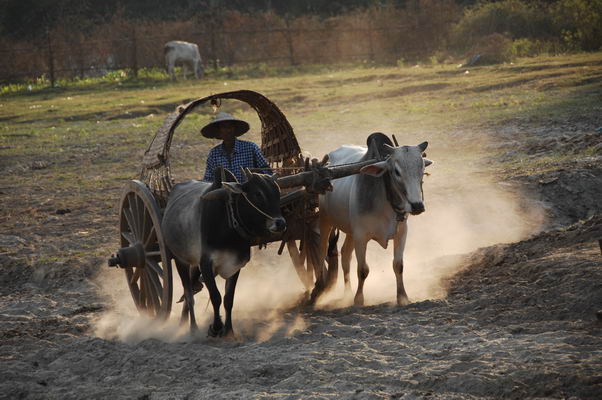
Center Weighted metering, Daylight White Balance, ISO160, Aperture Priority Mode, Shutter speed 1/320s, Aperture f5.6, 18-200mm
Shot in Mandalay, Myanmar. It was close to evening and the bullock cart happened to pass by. The path is sandy and the bull kicked the sand as they pulled the cart. Without hesitation, I fired many shots.
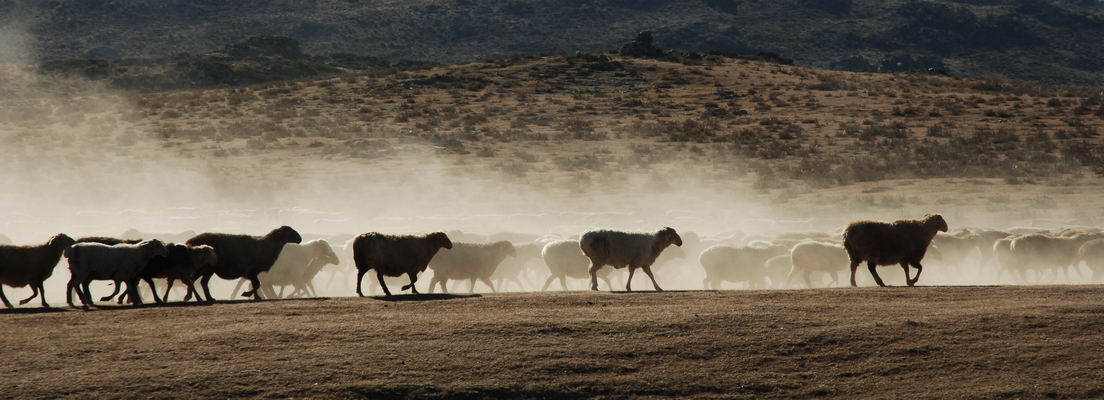
Matrix metering, Daylight White Balance, ISO500, Aperture Priority Mode, Shutter speed 1/1500s, Aperture f8, 18-200mm
Shot from a moving bus during our journey in North Xinjiang, China. It was autumn and the herd had to migrate to other places to escape from the coming winter. Along the way, there were many scenes like this and there was no way the bus could stop all the time. What we could do was to ask the bus to slow down and we shot through the window of the bus. It will be helpful to ask the driver to clean the windows daily.
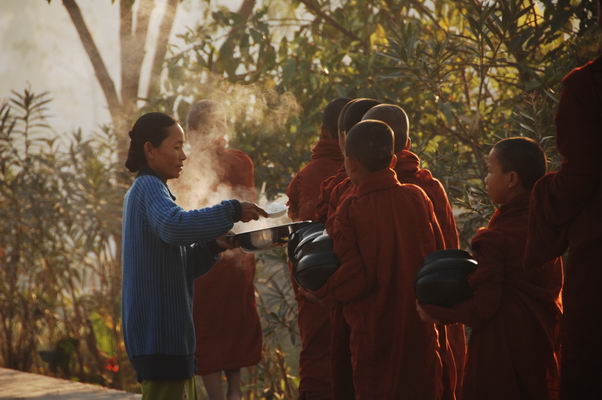
Matrix metering, Daylight White Balance, ISO400, Aperture Priority Mode, Shutter speed 1/500s, Aperture f5.6, 18-200mm
Alms collection is a common sight in Thailand and Myanmar. This was shot in Inle, Myanmar. The hot rice released much steam which showed how cold the morning was. Shot in the early morning, the morning light helped made the picture look subtle and not harsh.
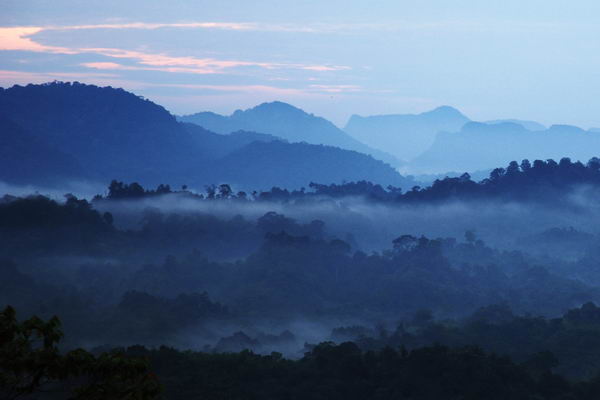
Center Weighted metering, Daylight White Balance, ISO125, Aperture Priority Mode, Shutter speed 1/60s, Aperture f4.5, 18-200mm
Shot in Kuching, Sarawak Malaysia. This picture was used for one of the cover pages of Silkwind, Silkair’s inflight magazine. We woke up at 4am and took an hour’s ride to the mountain top and waited for sunrise. As you can see, the sunrise turned out to be disappointing, as it was cloudy, but the thick dense forest created layers and layers of mist. It does not mean sunrise photography is about capturing the sun and the clouds. Be always ready for cloudy morning and look for some other possible photography angles. At least you get some shots in return for waking up at 4am!
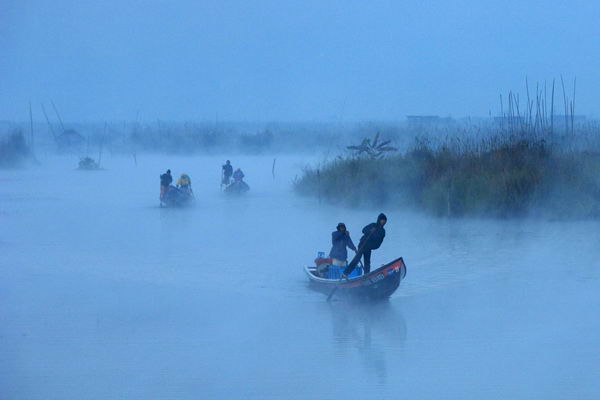
Matrix metering, Daylight White Balance, ISO320, Aperture Priority Mode, Shutter speed 1/200s, Aperture f6.3, 18-200mm
Early morning, the fog blanketed the lake in Inle, Myanmar. It was very cold, approximately 3 degrees Celsius. We were not prepared for the sudden change in weather as it was supposed to be sunny in Inle then. Imagine us in summer wear wrapped in the hotel’s bathroom bath towels and robes when we took this picture at the hotel’s pier. We were lucky that the hotel’s workers began to reach the hotel via these boats and they made great subjects.
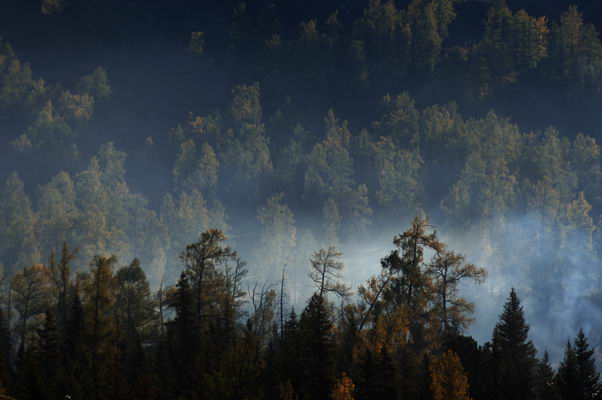
Center Weighted metering, Daylight White Balance, ISO100, Aperture Priority Mode, Shutter speed 1/1500s, Aperture f3.5, 18-200mm
Morning mist in the thick and dense forest can be easily seen in the large rural areas where the trees grew close to one another. Many people claimed that they hardly see it shows how often people overlook the beauty of the countryside. This picture was taken in Xinjiang, China. One has to wake up early to take this type of picture. As the sun rises, the air will turn warmer and the mist will quickly disappear.
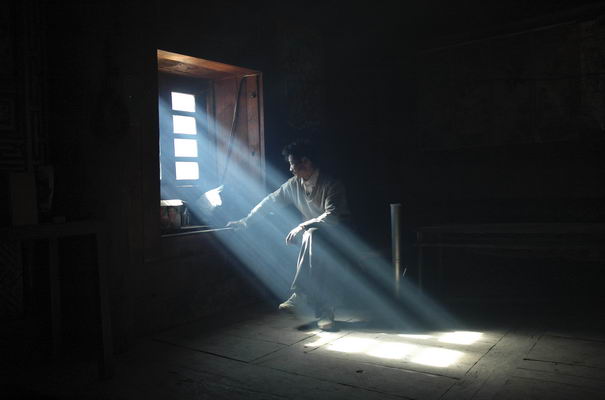
Center Weighted metering, Daylight White Balance, ISO400, Aperture Priority Mode, Shutter speed 1/250s, Aperture f5.6, 18-70mm
This room was dusty and cold. There was this window with strong light shining into the room. The dust particles in the air helped to create the strong ray as shown. Without any subject, the picture looked boring. I asked my local guide to find me a model. She returned with the owner of this house and he agreed to sit by the window, gazing out. It worked well.
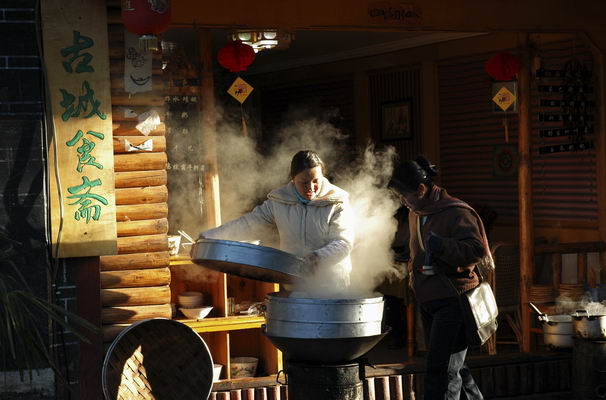
Center Weighted metering, Daylight White Balance, ISO400, Program Mode, Shutter speed 1/125s, Aperture f5.6, 18-70mm
This is probably better known as steam instead of smoke, but I thought it is good to cover this picture as well. Smoke or steam, the effect is very much similar. We need light to reveal the smoke and steam. As the lady removed the lid cover, a thick cloud of steam burst out of the steamer. I shot many pictures, where in some pictures, the steam covered the face of the lady. I selected this one where the steam neatly wrapped round the lady’s body.
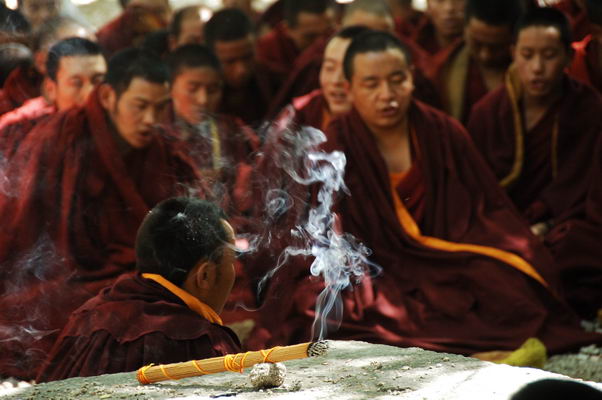
Center Weighted metering, Daylight White Balance, ISO800, Aperture Priority Mode, Shutter speed 1/60s, Aperture f5.6, 18-200mm
The slow flowing smoke could create fanciful patterns in the air as shown, backlit by the light shining at the smoke from the back. The chanting Tibetan monks formed the background of the photograph and the smoke helped to complete the tranquil look and feel. Smoke can be turbulent in some cases and tranquil too, as in this case. This is the beauty of smoke, which made many photographers love it. Big incense was used which explained the thicker smoke. If it was thin incense, we probably need a few of them clustered together to get this effect.
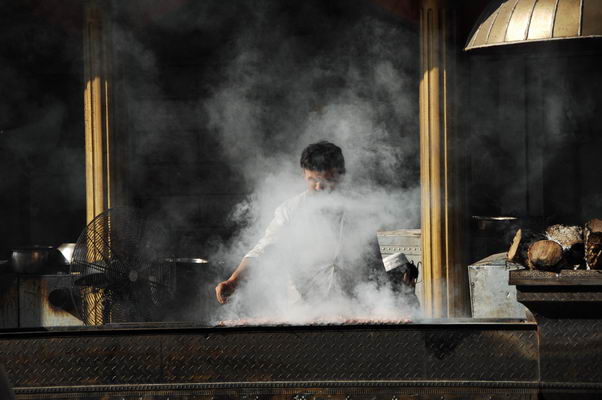 |
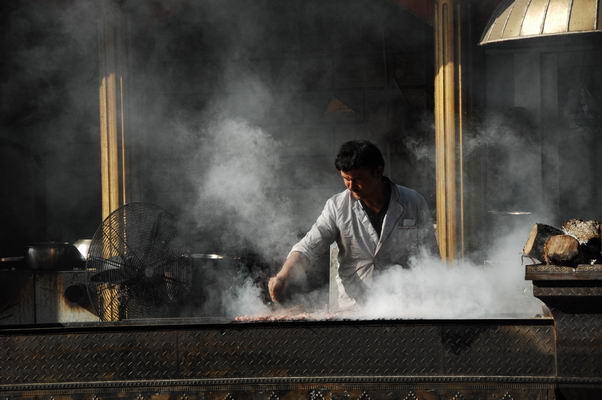 |
Center Weighted metering, Daylight White Balance, ISO320, Aperture Priority Mode, Shutter speed 1/1000s, Aperture f5.6, 18-200mmYou may not believe it but it is true that I took more than 40 shots of this angle. The smoke was erratic and irregular. Out of the 40 over shots, it was not hard to see pictures like the one on the left where the smoke covered the face of the chef. This is called “Smoked out”. Given such situations where the game of probability ruled, it is wiser to shoot more shots and choose the better ones. I managed to select a few that resembled the one on the right, where the smoke is obvious and yet the smoke does not cover the chef. |
|
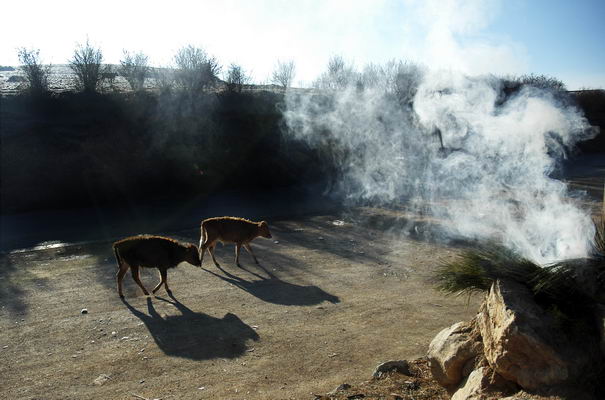
Center Weighted metering, Daylight White Balance, ISO400, Program Mode, Shutter speed 1/750s, Aperture f6.7, 18-70mm
The burning grass and strong morning light made me looked at the surrounding for opportunity to get a good photograph. 2 calves passed by. I may call these 3 in 1. I got backlight on the calves, shadow of the calves on the ground plus the smoke. Other possible options would be getting my local guide who was dressed as a local to walk and pose for me. But I thought the 2 calves made better subjects instead.
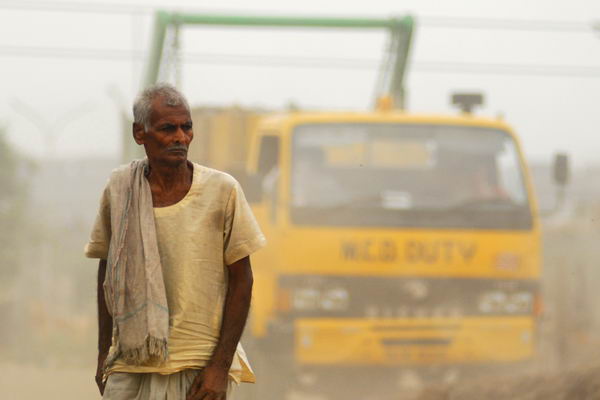
Matrix metering, Daylight White Balance, ISO250, Aperture Priority Mode, Shutter speed 1/1250s, Aperture f2.8, 80-200mm
Shot in the waste areas in Delhi, India, where the dust and garbage pilled up and it was not hard to see scenes like this. I called it the mini Desert Storm, as I had to ensure that my respiratory inlets are well protected from the dust. I saw this elderly man walking alone. I took a shot. Suddenly, a big truck came from behind and the yellow colour struck me. As it was dusty, the yellow colour seemed muted and not too dominant.
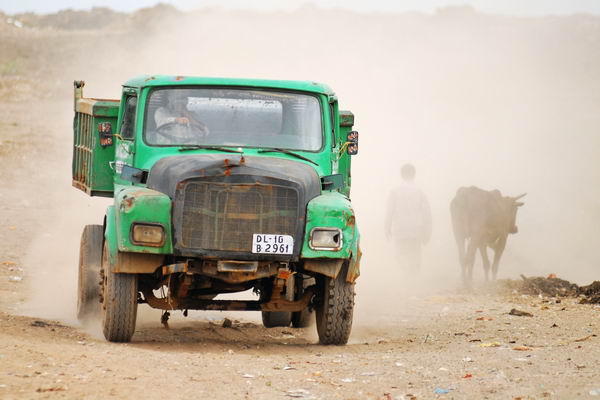
Matrix metering, Daylight White Balance, ISO250, Aperture Priority Mode, Shutter speed 1/1000s, Aperture f2.8, 80-200mm
Also shot in the waste areas in Delhi, the mini Desert Storm stirred up and what caught me were the person and the cow in the midst of the “storm of dust”. I had two choices then, either shoot when the truck was in the foreground or wait for the truck to move away and we shall see the person and the cow in the midst of the “storm”. I did not like to take chance, as the person and the cow might disappear out of the blue. I shot a few shots and I was right. The person and the cow parted ways in separate direction after the truck moved away.
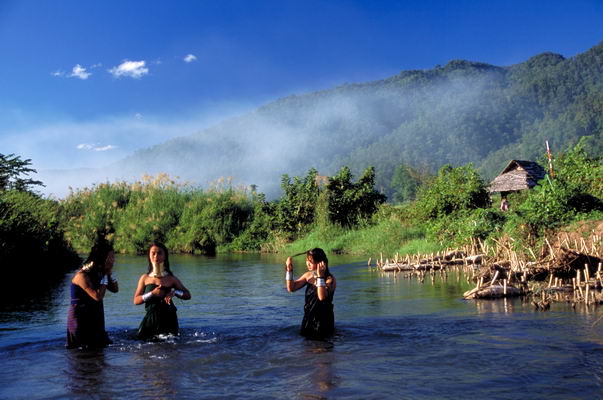
Center Weighted metering, Daylight White Balance, ISO200, Program Mode, Shutter speed 1/500s, Aperture f5, 18-70mm
The models were in the water. I had my fun too, got into the water and get this shot done. The mist in the background was helpful to hide away some distracting electrical poles. The mist was thin, hence I had to wait for a good chance as the wind was strong and the mist formation kept changing.
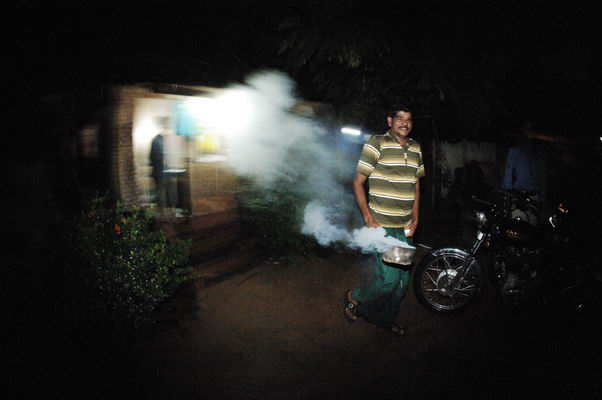
Center Weighted metering, Daylight White Balance, ISO800, Program Mode, Shutter speed 1/6s, Aperture f9.5, 10.5mm fisheye with slow sync flash
It was after dinner in Kochi, India and I was on my way to the toilet. I always told my photography students to bring their camera wherever they go, including the toilet. I was rewarded when this watchman was smoking out the area to ward off the mosquitoes. There was no strong light, hence I decided to use slow sync flash (a.k.a. night portrait flash) and with a high ISO like 800, get the shot done. High ISO was used in order to get a faster shutter speed. If ISO100 was used, the shutter speed could be as slow as 3 seconds. That will be disastrous with everything blurred.
